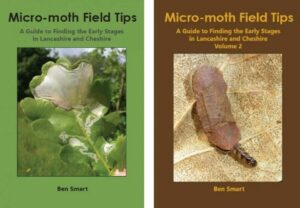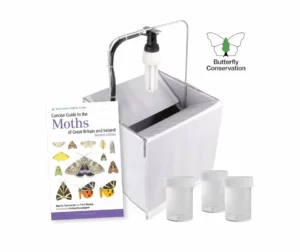Moths are a fascinating and beautiful part of the natural landscape in the UK. However due in part to their elusive nature, often plain colouration and the unfavourable habits of a few cloth eating species, they very rarely receive the same recognition as their more illustrious butterfly cousins.
However, understanding and protecting our moths is more important now than ever. Recent studies in the UK have highlighted that many common and specialist moth species are continuing along a worrying trend of decline as they are subject to increasing pressures from urbanisation, pollution, agricultural intensification and climate change. The latest State of Moths Report estimated declines in moth abundance of around 33% between 1968 and 2021, while the latest State of Nature report estimates declines for many common moths of around 25% between 1978 and 2018. While the estimated rate of decline does vary between studies, being influenced by the timescale over which data was collected and the geographic location data was collected from (northern counties appear to undergo slower declines in moth abundance than southern counties), they come to the same conclusion that many of the UK’s moths are declining at significant rates.
These reports would not be possible without the extensive records provided by professional entomologists and amateur moth enthusiasts around the country. You can help conserve this key group by submitting your own records to either a local record centre or to a national recording scheme, such as the National Moth Recording Scheme (NMRS).
Identifying Moths
Getting started with identifying moths can appear a rather daunting task. This concern is understandable as a quick skim through any field guide will quickly show the near identical appearances of some species and the extreme variation present in others. However there are a number of moth species that are quite distinct and offer an excellent introduction to the world of moths.
In this article we have compiled a list of those species which can be encountered throughout most of the UK. Some species are more restricted than others and some are only typically encountered when using a light trap, however they are all fantastic species to become familiar with.
Silver-Y
Latin name: Autographa gamma
Distribution: Throughout UK
Size: Medium
Look out for: Unbroken silver “y” on the upper forewing.
Did you know?: The Silver-Y undertake intergenerational migrations. Immigrant moths in spring will breed and over successive generations swell their population size by around four times, until the Autumn when they emigrate back across the channel and south through Europe.
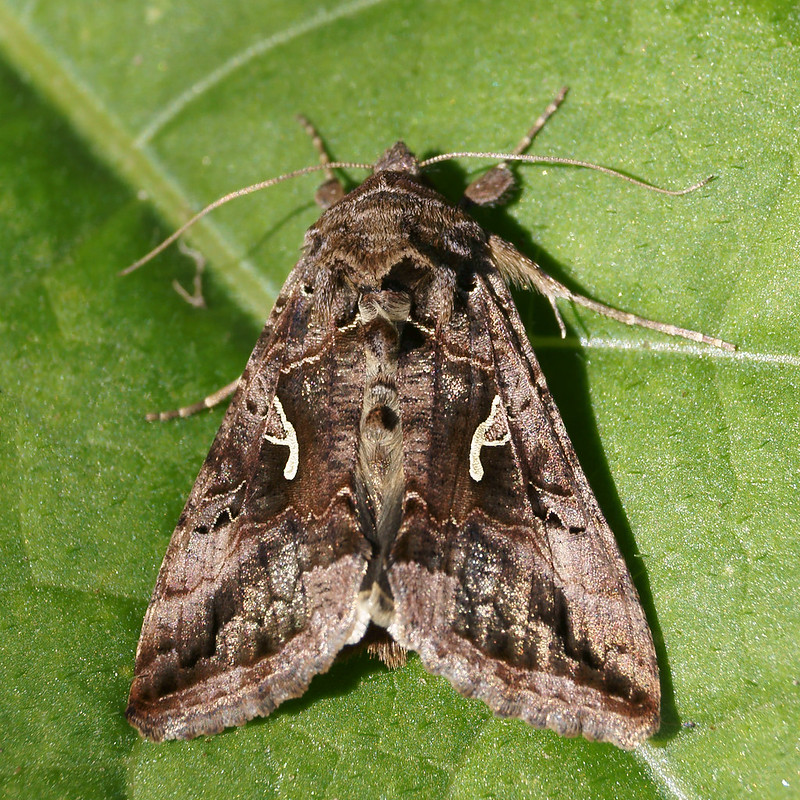
Large Yellow Underwing
Latin name: Noctua pronuba
Distribution: Throughout UK
Size: Medium/Large
Identification: Yellow hindwings with black borders are the best indicator, however it often rests with wings closed and has a highly variable appearance.
Did you know?: Considered by some to be one of our most common medium-large moths, especially when populations are bolstered by occasional large immigrations in the south of the UK.
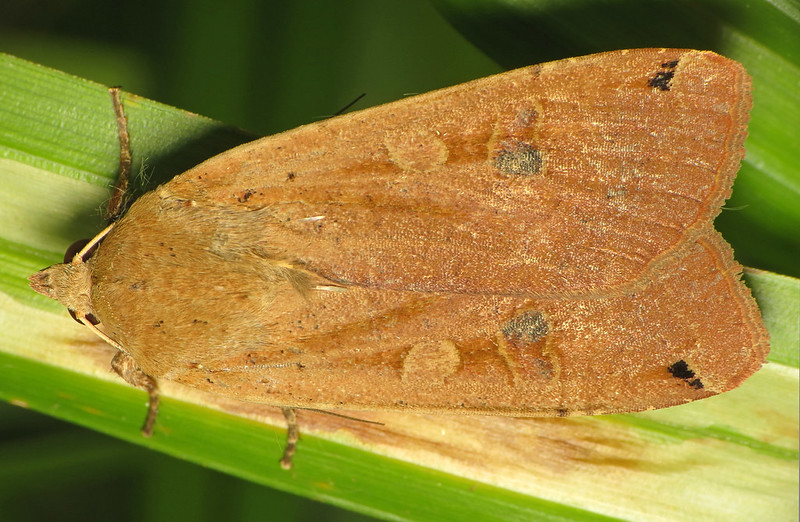
Red Underwing
Latin name: Catocala nupta
Distribution: Throughout UK, most common in south-central England
Size: Large
Identification: Red hindwing is very distinctive. Similar looking species have a darker crimson red and are much scarcer.
Did you know?: The Red Underwing is gradually increasing its range northwards and becoming more common in previously low-density colder regions.

Angle Shades
Latin name: Phlogophora meticulosa
Distribution: Throughout UK
Size: Medium
Identification: Unique folded wings give the impression of a fallen autumn leaf
Did you know?: Adult moths are often encountered in the day resting in the open.
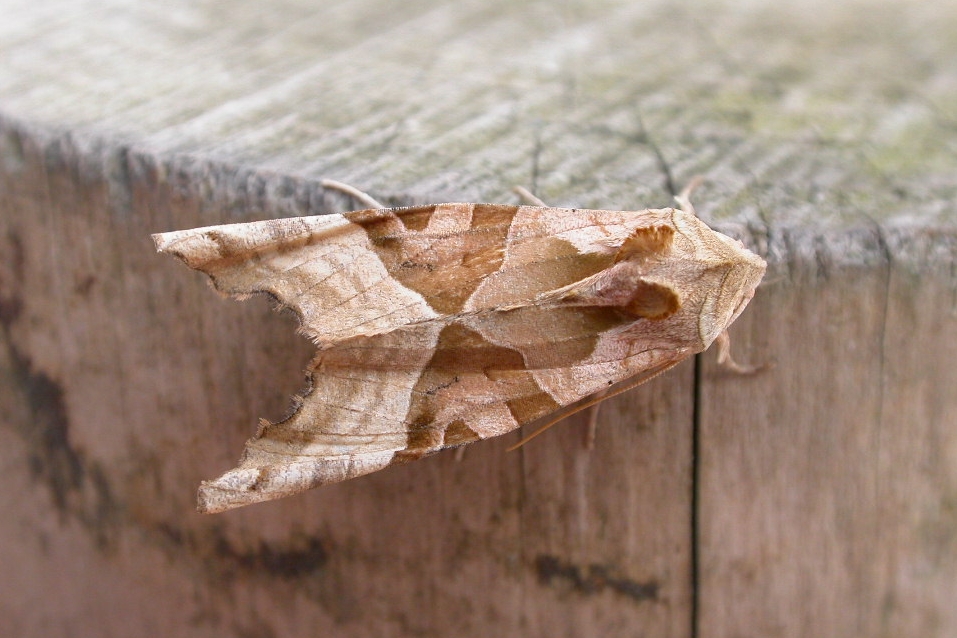
Peppered Moth
Latin name: Biston betularia
Distribution: Throughout UK
Size: Large
Identification: Rests with wings spread open. White form is peppered with black spots. Black form has mostly uniform colour and is generally only found in urban areas.
Did you know?: The abundance of white and black variants of the Peppered Moth has been extensively studied and is often used as an example of evolution by natural selection.
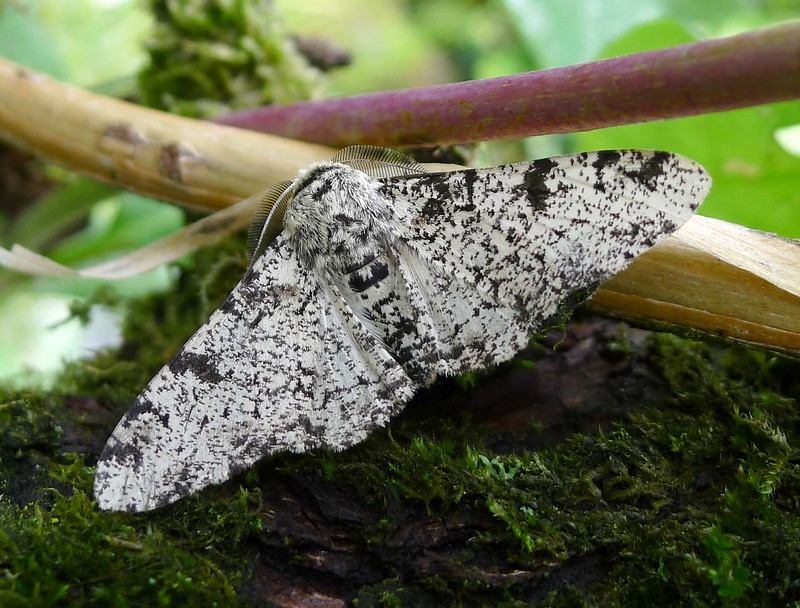
White Ermine
Latin name: Spilosoma lubricipeda
Distribution: Throughout UK
Size: Medium
Identification: Strong white coloured forewings, peppered with black spots, and a yellow-coloured upper abdomen. Wing colour and spotting is variable within and between populations.
Did you know?: Its common name is derived from its resemblance to an Ermine coat.
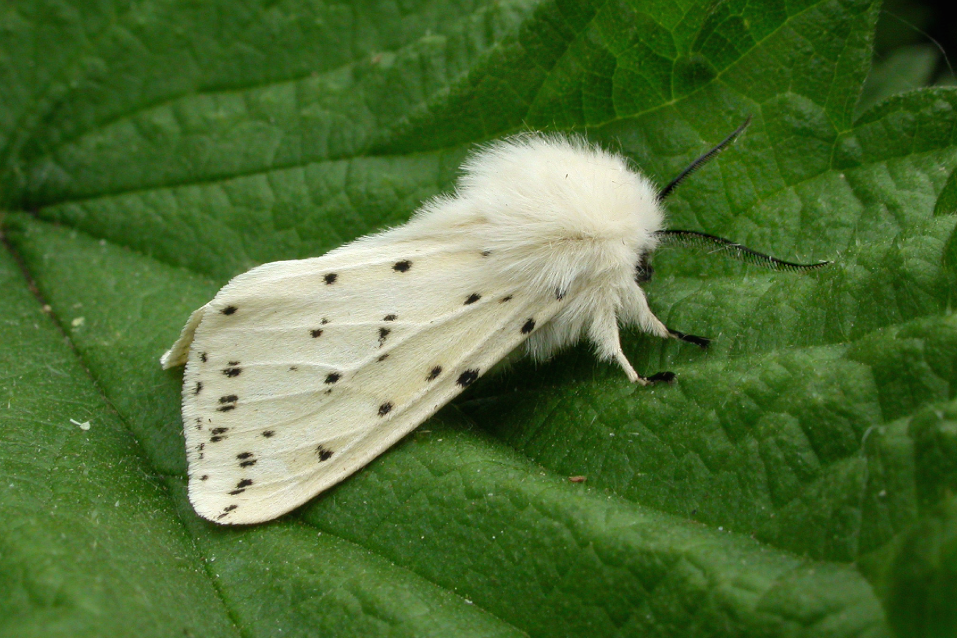
Muslin Moth
Latin name: Diaphora mendica
Distribution: Throughout UK
Size: Medium
Identification: They have large stocky wings. Males typically have grey-brown coloured wings, whereas Females have a similar colouration to White Ermine moths, though their wings are opaque
Did you know?: Male Muslin Moths in Ireland have a creamy white colouration to their wings. Similarly coloured males can also be found in some locations on the Cornish/Devon border.
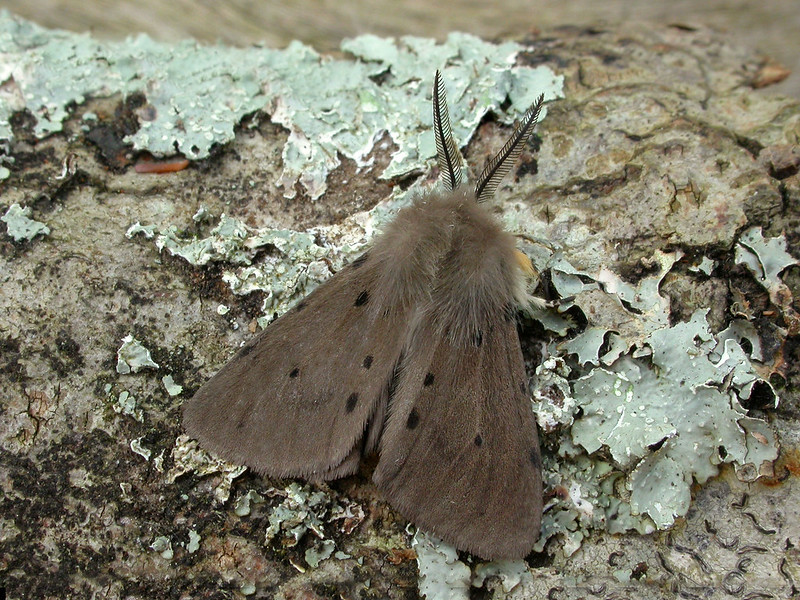
Swallow-tailed Moth
Latin name: Ourapteryx sambucaria
Distribution: Throughout UK, though scarcer in Northern Scotland
Size: Large
Identification: Broad wings with a pale uniform yellow colour, intersected by diagonal dark lines. Hindwings have short tails.
Did you know?: The species is hard to encounter without a light trap. The adults have a short flight period and are strictly nocturnal, while the caterpillars have a cryptic colouration which gives them the appearance of a twig.
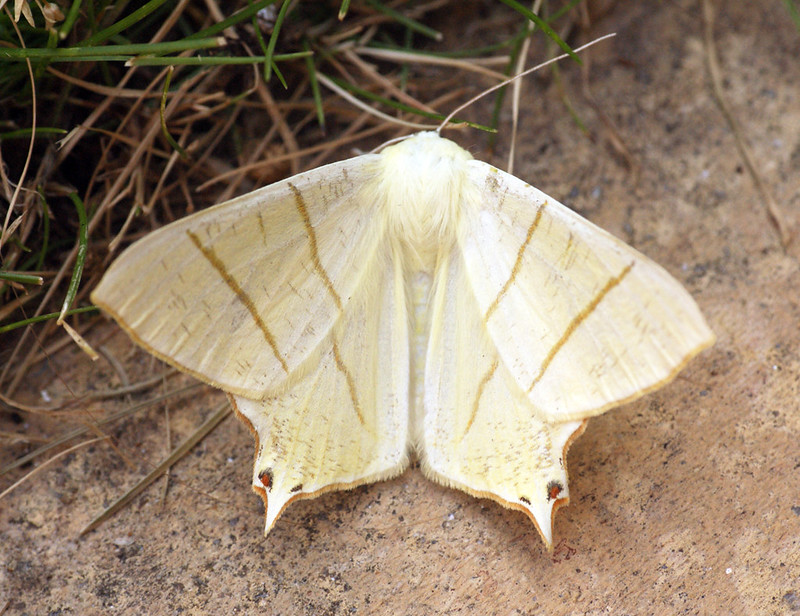
Feathered Thorn
Latin name: Colotois pennaria
Distribution: Throughout UK
Size: Medium
Identification: Rests with wings flat apart. Wings are a reddish brown with a pink hue and have a slightly hooked tip on the forewing. They fly very late in the year which can help with distinguishing from similar species.
Did you know?: Their common name is derived from the large feathered antenna present on males of the species.
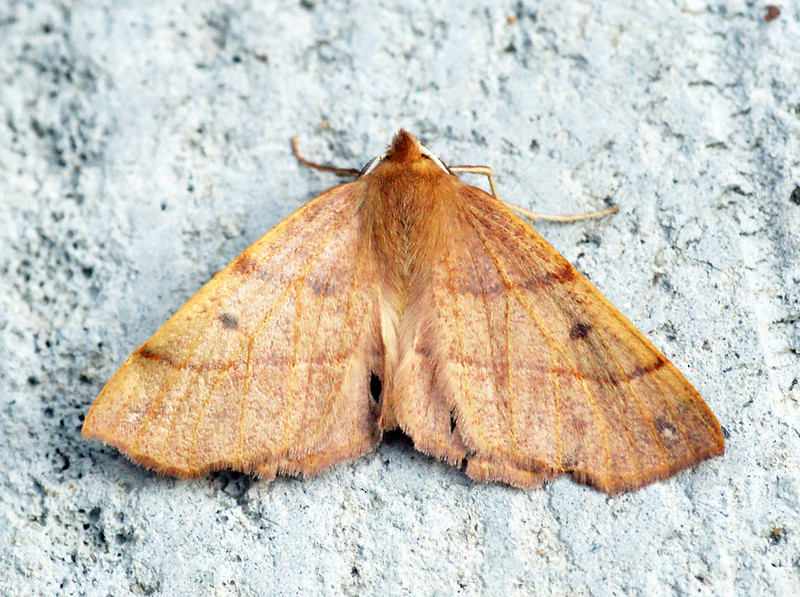
Hebrew Character
Latin name: Orthosia gothica
Distribution: Throughout UK
Size: Medium
Identification: Have distinctive and unique black markings on the forewing.
Did you know?: Their common name is derived from the markings on the forewing which resemble the Hebrew letter Nun.
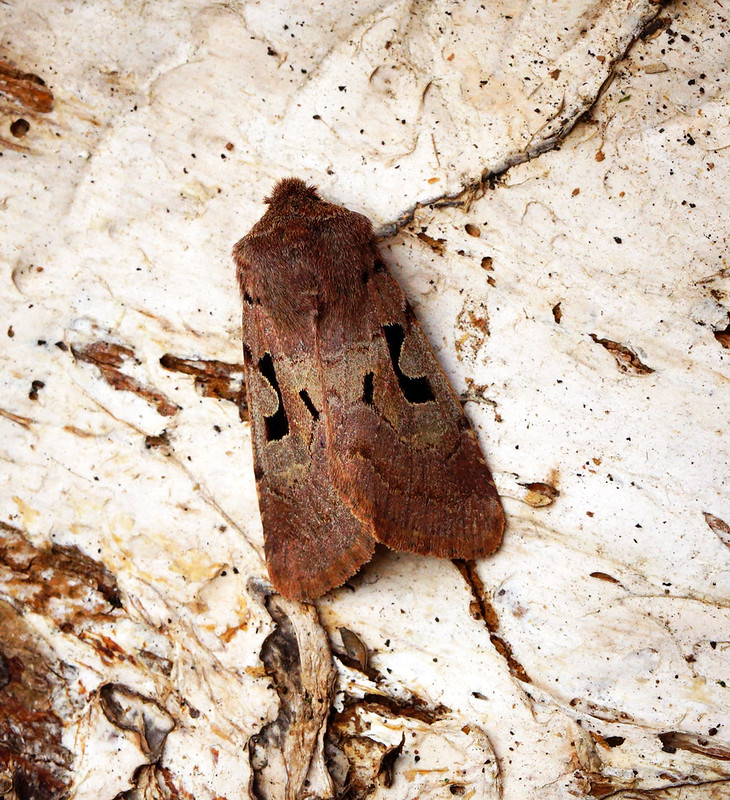
Common Quaker
Latin name: Orthosia cerasi
Distribution: Throughout UK, though scarcer in Northern Scotland
Size: Medium
Identification: Has a highly variable markings and colouration, however the strong outline of the “oval” and “kidney” markings on the forewings is a helpful identifier.
Did you know?: The four quaker species in the UK are believed to have received their common name back in the 1700s. Lepidopterists took inspiration from the Quakers at the time, who apparently wore clothing of similar hues.
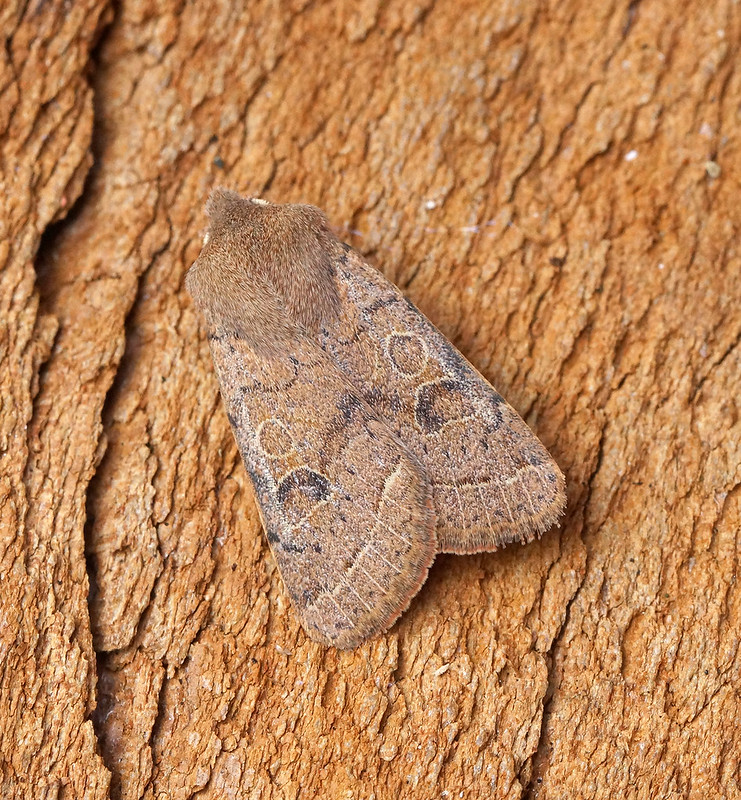
Elephant Hawk-Moth
Latin name: Deilephila elpenor
Distribution: Throughout UK, though scarce in Scotland
Size: Large
Identification: Has striking and well defined pink colouration across the whole body.
Did you know?: The name of the Elephant Hawk Moth is derived from its resemblance to an Elephant’s trunk when in its larval form.
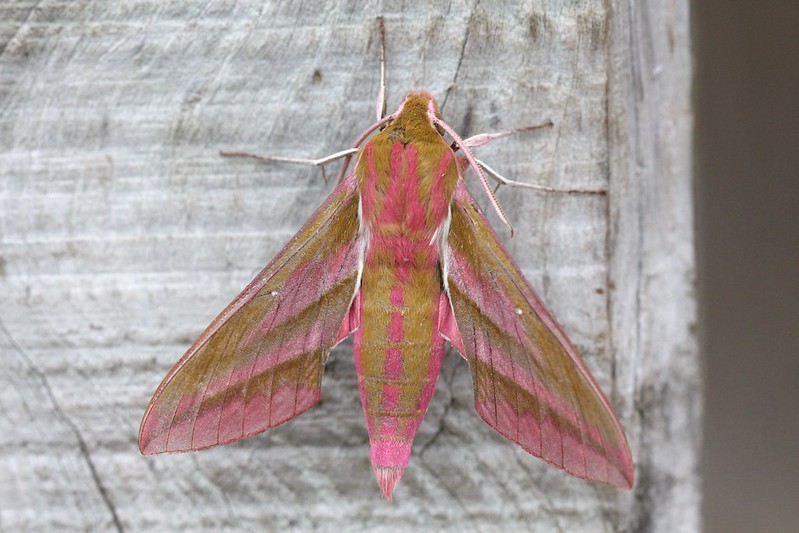
Poplar Hawk-moth
Latin name: Laothoe populi
Distribution: Throughout UK
Size: Large
Identification: Unique wing shape where hindwings extend beyond forewings and gives it a resemblance to a dead leaf. Its abdomen is curved upwards at the tip.
Did you know?: This is believed to be our most common Hawk-Moth species and it can be found by light trapping in summer throughout the UK.
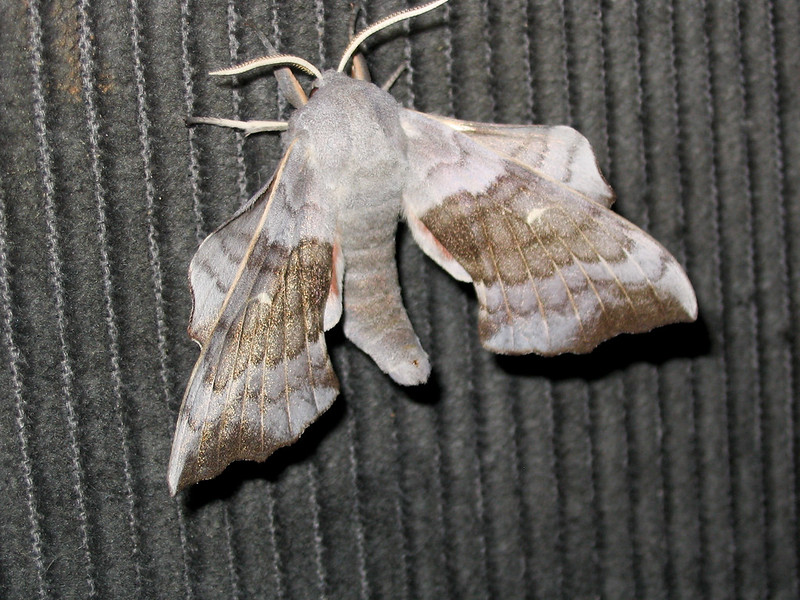
Jersey Tiger Moth
Latin name: Euplagia quadripunctaria
Distribution: Mostly found it the South-west of the UK, though it is spreading North
Size: Medium-Large
Identification: Wings bear a unique diagonal zebra stripe pattern which can be used to tell it apart from other Tiger Moth species.
Did you know?: Until recently this moth was considered scarce in the UK and could only be commonly encountered on Jersey and some parts of the South Devon coastline.
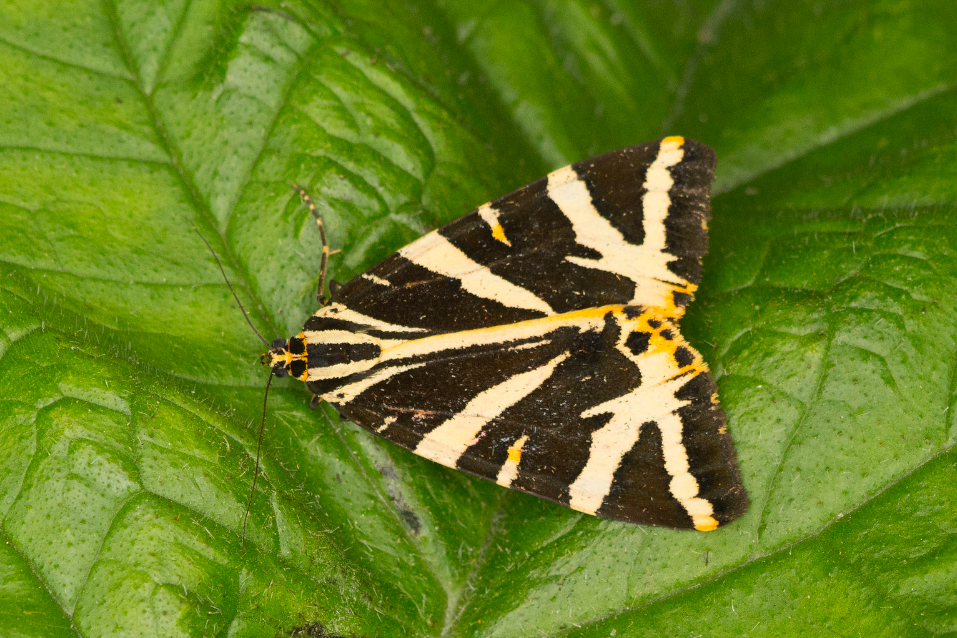
Garden Tiger Moth
Latin name: Arctia caja
Distribution: Throughout UK
Size: Medium-Large
Identification: Bright orange hindwings have bold blue-black spots which can help tell this species apart from other Tiger Moths
Did you know?: The Garden Tiger has defensive glands behind its head which it uses to secrete a toxic fluid when attacked.
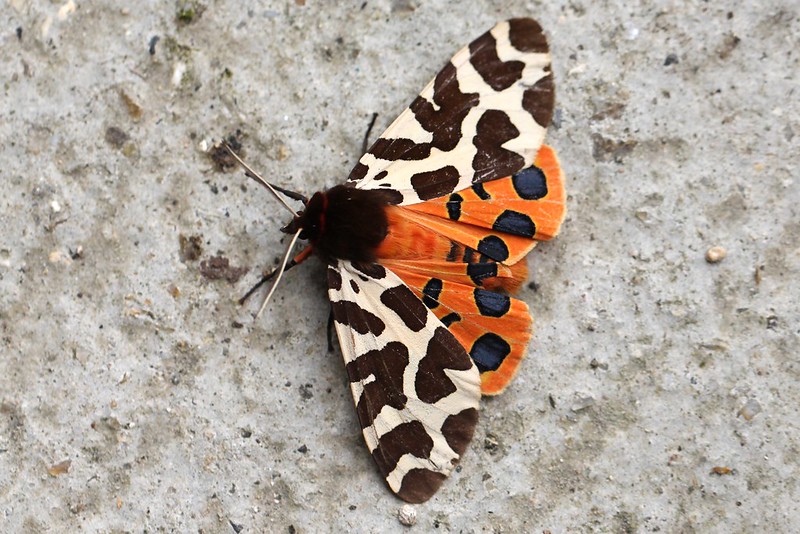
Scarlet Tiger Moth
Latin name: Callimorpha dominula
Distribution: Mostly found it the South-West of the UK and Wales
Size: Medium
Identification: The forewings have a distinct metallic green-black colour patterned with white/cream coloured spots. Hindwings are a striking red colour in most individuals.
Did you know?: Rarely aberrant forms of Scarlet Tiger Moth occur with yellow underwings.
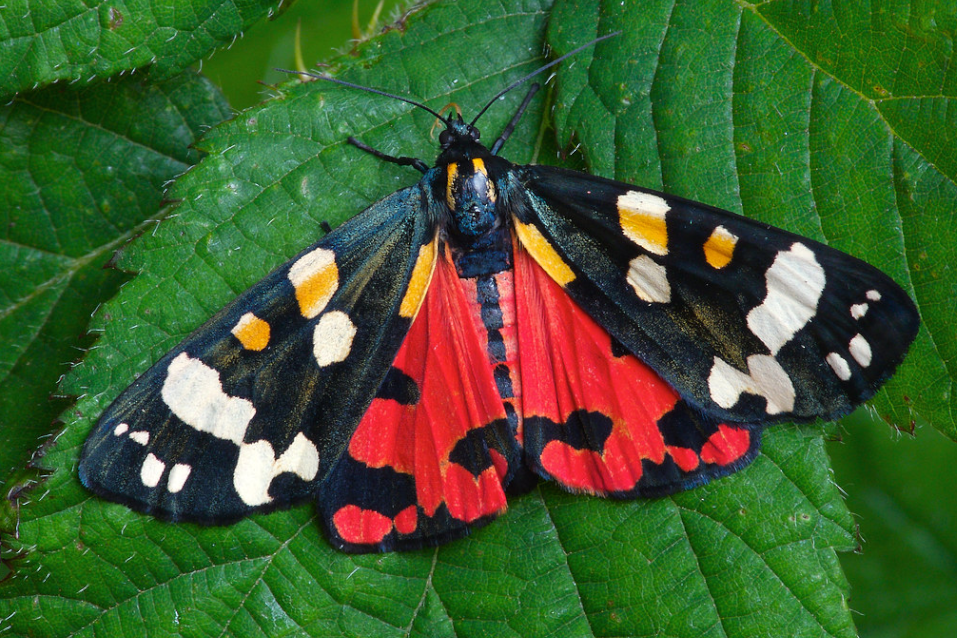
Six-spot Burnet
Latin name: Zygaena filipendulae
Distribution: Throughout UK
Size: Medium
Identification: Has metallic coloured forewings patterned with three pairs of vibrant red spots
Did you know?: The six-spot Burnet is the commonest burnet moth in the UK and can be found across most of the country, including the outer hebrides.

Cinnabar Moth
Latin name: Tyria jacobaeae
Distribution: Throughout UK
Size: Medium
Identification: Forewings are dark black with a long streak of vibrant red on the outer edge. Antennae are thin and lack the bulbous tip of similar looking Burnet moths.
Did you know?: The caterpillars are gregarious feeders of ragwort, and have been intentionally introduced into the United States, Australia and New Zealand to biologically control ragwort.
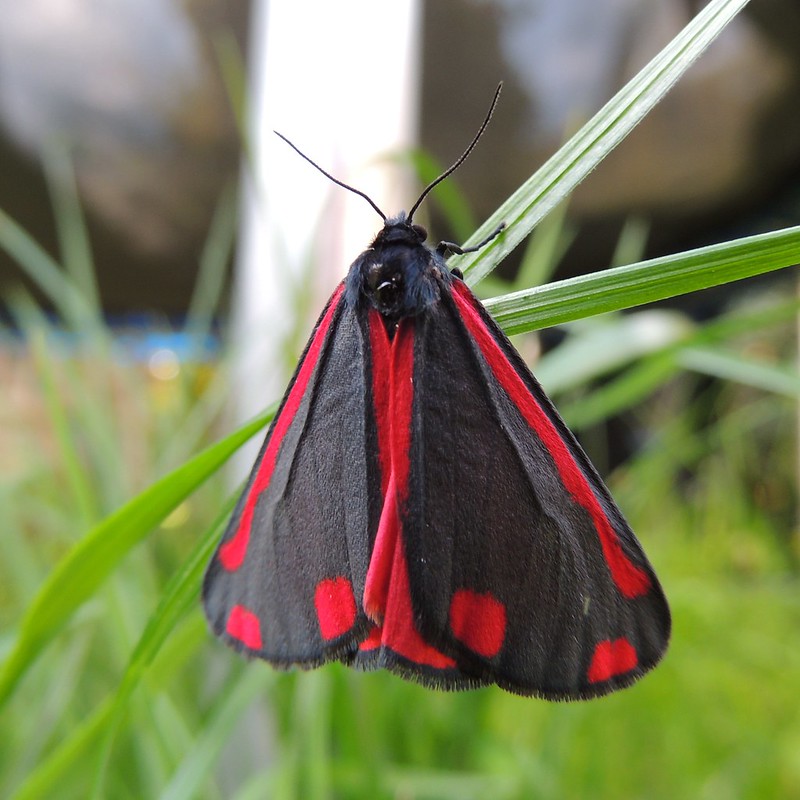
Common Plume
Latin name: Emmelina monodactyla
Distribution: Common in England with increasing scarcity further North
Size: Small
Identification: This rather bizarre looking moth rests with the wings held away from the body, giving it a unique T shape.
Did you know?: These moths have clefts in their wings and plumes at the end of each division of the wing.
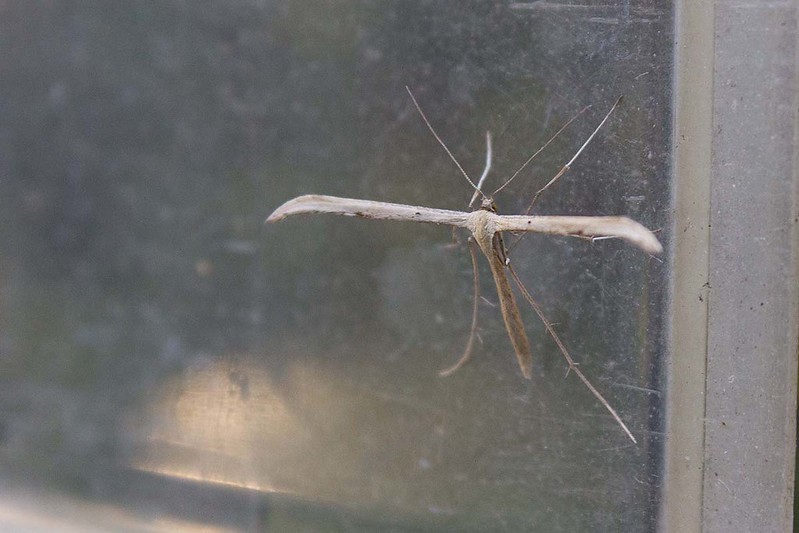
Suggested reading:
 Field Guide to the Moths of Great Britain and Ireland
Field Guide to the Moths of Great Britain and Ireland
Paperback | October 2018
The third edition of the Field Guide to the Moths of Great Britain and Ireland has been fully revised, updated and restructured, bringing it in line with the latest thinking in taxonomy.
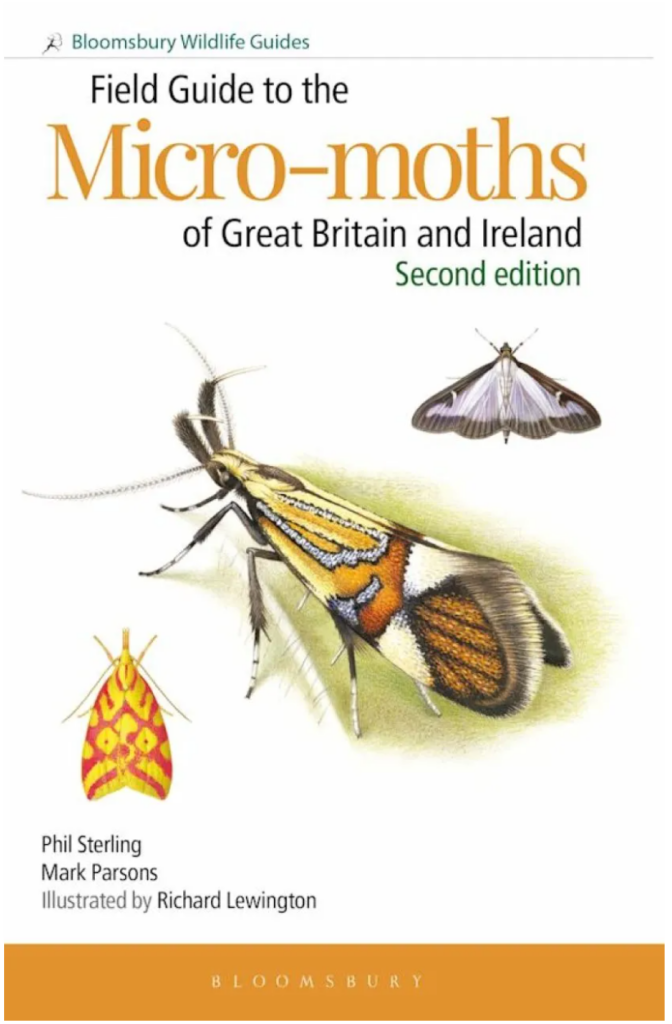
Field Guide to the Micro-moths of Great Britain and Ireland Paperback | December 2023
The fully revised and expanded second edition of the ground-breaking book. This is a complete guide to the Micro-moth families found in the UK. The second edition covers over 1,300 species with more than 1,500 detailed photographs and artworks.
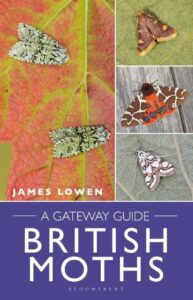 British Moths: A Gateway Guide
British Moths: A Gateway Guide
Spiralbound | September 2021
British Moths: A Gateway Guide is a wonderful introduction to 350 species of the most common and eye-catching adult moths that you may encounter in the UK. Species are organised by season, and similar-looking moths are placed alongside one another for ease of identification.
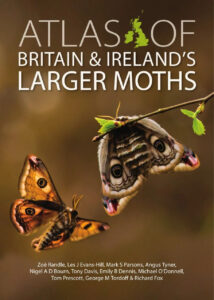 Atlas of Britain & Ireland’s Larger Moths
Atlas of Britain & Ireland’s Larger Moths
Hardback | November 2019
Atlas of Britain and Ireland’s Larger Moths includes accounts for 866 macro-moth species, each with a distribution map showing current and historical occurrences, trends, status, a phenology chart and colour image.
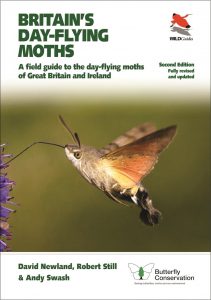 Britain’s Day-Flying Moths: A Field Guide to the Day-Flying Moths of Great Britain and Ireland
Britain’s Day-Flying Moths: A Field Guide to the Day-Flying Moths of Great Britain and Ireland
Flexibound | July 2019
This concise photographic field guide helps you to identify the day-flying moths most likely to be seen in Great Britain and Ireland, combining photographs, clear and authoritative text and an easy-to-use design.
Micro-Moth Field Tips + Micro-Moth Field Tips, Volume 2: A Guide to Finding the Early Stages in Lancashire and Cheshire – A Chronological Guide from January to December
Paperback | December 2021
Micro-Moth Field Tips describes how to identify the early stages of more than 170 species of micro-moth larvae at all times of the year. There are 12 chapters, one for each month, as well as recommendations on what micro-moths to look for on field trips at different times of the year. Micro-Moth Field Tips, Volume 2 follows on from the enormous success of the first volume. Designed as being complementary to the first volume, the book has an introduction to the early stages of each family of micro-moths as well as many images of leaf mines.
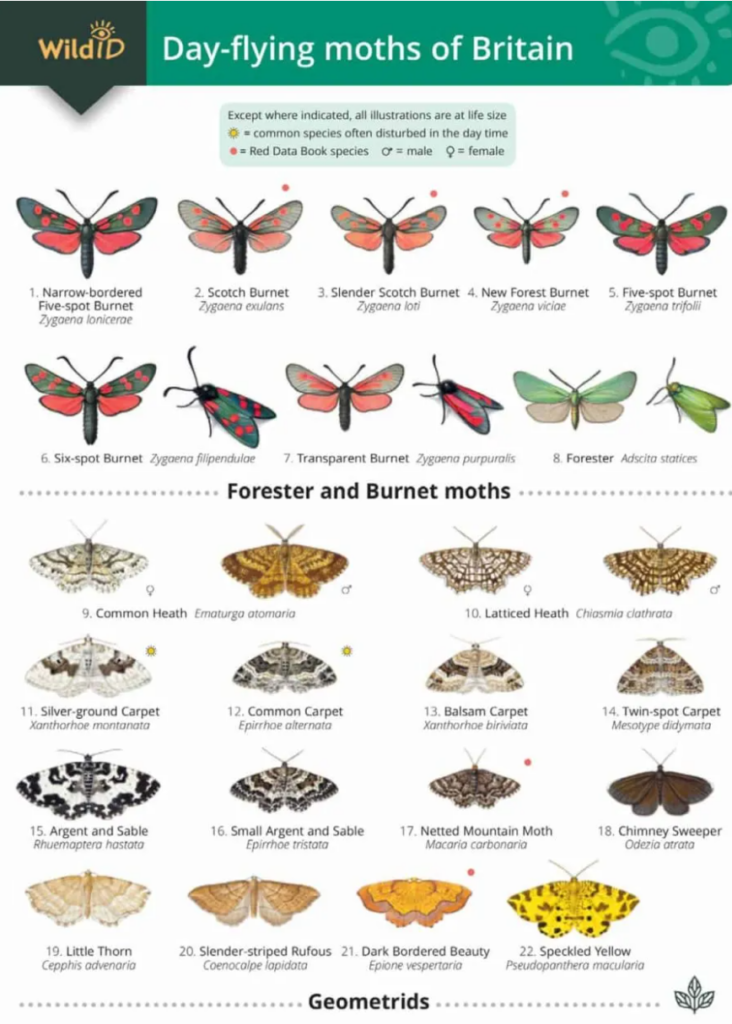
Guide to the Day-flying Moths of Britain Unbound | July 2006
This 8-page chart shows 103 species of day-flying macro-moths. Paintings show the adult moths at life size and in their natural resting postures. The text, arranged by family with full cross-referencing to images, provides further information on the habitats and distribution of illustrated species.
These 60ml sampling containers are made from see-through polypropylene and have secure screw-on lids. They’re ideal for temporarily keeping small aquatic or terrestrial specimens.

Opticron Hand Lens 22mm 10x Magnification
This Opticron Hand Lens contains a high quality 23mm doublet lens, made of glass and provides excellent distortion-free magnification. The 10x magnification is recommended for general observations and this magnifier is the one most commonly recommended for all types of fieldwork.
The NHBS moth trap is a lightweight and highly portable trap, tested and approved by Butterfly Conservation. The starter kit includes 3 x 60m clear collecting pots and the Concise Guide to the Moths of Great Britain and Ireland to help you observe and identify the species you find in your trap.
UV glasses are highly recommended when using equipment that emits UV light, such as moth traps.






